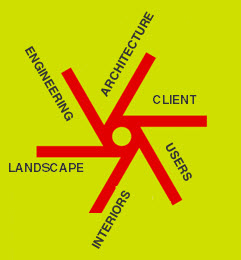Conversations in Collaborative Sustainable Design
You've read before about the interdisciplinary collaboration that occurs on a daily basis here at LPA. Listen in on a conversation between Entitlement Coordinator Heidi Roseler and Architect Kelly Angell, as they discuss the best of engineering, architecture, LEED exams, and more.
HKR: Oh, how we love the collaborative process . On any day, I can call the mechanical or structural team or walk to the folks in our civil team and ask any number of questions. Our integrated design firm which includes the engineering and architecture teams makes the work we do much easier.
. On any day, I can call the mechanical or structural team or walk to the folks in our civil team and ask any number of questions. Our integrated design firm which includes the engineering and architecture teams makes the work we do much easier.
KA: When I started at LPA I was introduced to LPA University and monthly office luncheons. Many of the topics have been about educating the entirety of the firm, across all the different specialties, bringing every market segment and profession along for the ride. My own learning started from day one. I've had the opportunity to work with so many great people.
HKR: We started working together a couple years ago, and would often ask each other about the finer points of what the other one does. I'd ask what was going on with our project, and you would ask about the Division of State Architect's entitlement process.
KA: On my quest to study and pass the LEED exam, I teamed up with study partners across different market segments and jobs: Entitlements, K-12, Landscape, and Interiors. We all brought our own perspectives to the study table and together learned more.
HKR: But that came after our "classes" on Fridays where the Mechanical and Architecture gurus sat down and explained credit by credit the LEED documentation system and what the USGBC was trying to achieve. It was awesome to see projects the firm had worked on as examples, to see a real-world building design application.
KA: And getting the perspective from our design colleagues is energizing for them, and a learning experience for us. Great mentors also go a long way. When you have a team you can trust and respect, it makes it easier to go beyond and expand what you do, and trust that your team will have it covered. Having mentors that are passionate about teaching brings a synergy to integrated project delivery and the collaborative process.
HKR: Yes, we're lucky having  fabulous mentors to help us along the way when we both have questions. Communication is made simple via our inter-office communicator which is accessible from the field. The team philosophy is a big part of what we do, and allows us to draw on each other's strengths.
fabulous mentors to help us along the way when we both have questions. Communication is made simple via our inter-office communicator which is accessible from the field. The team philosophy is a big part of what we do, and allows us to draw on each other's strengths.
KA: I've been getting up to speed on the new California language of acronyms and specialized codes both you and our Energy Specialist have made a point of being available to explain.
HKR: The more we work together, the more the brilliance of the integrated design approach is apparent.
KA: A perfect example; the other day I was trying to track a FCD (whoa, here come the acronyms) and needed to find the DSA IR that explained the additional information required. Tah-dah! There's one of the K-12 school designers with a bookmark to the exact spot with a documented history of responding to the exact item.
HKR: With what you've taught me, I'm now able to dig into the CBCs and actually find something. And we all go to BD to use the right program or find the perfect image for a presentation.
KA: Often times the collaboration that receives all the glory is what you see when the building is complete, but there is a collaborative and interactive team behind the scenes. What we take from each of the members we work with can lead to a deeper understating and a more streamlined approach.